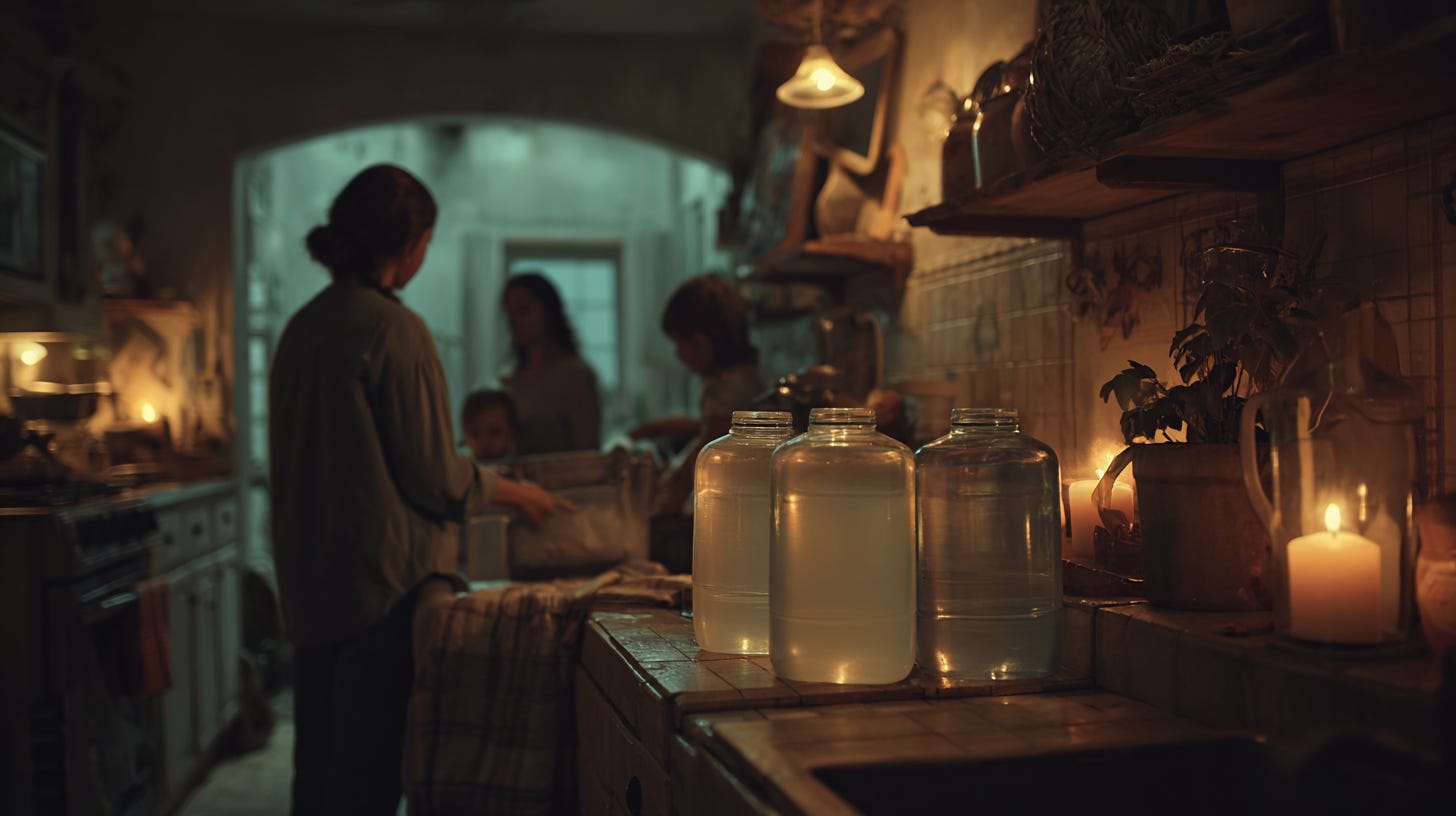Water: The Forgotten Urban Lifeline
When the taps run dry, water becomes the most urgent survival need — and the hardest to replace in the city.
Most of us take water for granted. We turn a knob and it flows.
But as we saw during COVID, even short disruptions in supply chains caused bottled water to vanish overnight. Imagine that — but with no guarantee the taps will come back on.
Water is the most overlooked part of preparedness, especially in urban and suburban settings.
Yet without it, none of the other pillars matter.
Fire can’t cook without water to boil.
Food is useless if you can’t swallow it.
Medical care collapses without sanitation.
Lessons From History
In the Balkan war, Selco wrote about how finding clean water was often more dangerous than finding food.
Wells and rivers were contaminated, access points were controlled, and neighbors guarded what little they had.
During every war and collapse in history, water has been weaponized.
From cutting off city aqueducts in ancient times to poisoning wells in modern conflicts, access to water is always among the first points of struggle.
In the United States, we’re not immune.
Flint, Jackson, and countless smaller towns have already seen what happens when water infrastructure fails.
The Reality in Urban Collapse
When the taps stop, here’s what you’re facing in a city:
Stored water runs out fast. The average family uses 300 gallons a day. Your few jugs won’t last.
Contamination spreads quickly. Without treatment plants, pathogens thrive in still water.
Conflict over sources. Parks, fountains, rivers — they become contested ground.
Practical Steps You Can Take Now
Store what you can.
The absolute minimum is 1 gallon per person per day for drinking only.
Realistically, aim for 2 gallons per person per day if you can. That covers drinking, cooking, and basic hygiene.
If your emergency food is dehydrated or freeze-dried, you’ll need even more water for rehydration.
Example: A family of four should plan for at least 56 gallons for 1 week (2 gallons × 4 people × 7 days). For a two-week supply, that’s 112 gallons. If you’re eating dehydrated food daily, plan closer to 120–140 gallons.
Diversify storage.
55-gallon drums or larger barrels for bulk storage.
Hidden caches if possible.
Purification matters.
Think about replenishment.
Rain catchment from roofs or balconies.
Portable collapsible containers for hauling.
Know local rivers, lakes, or ponds.
Don’t overlook hygiene.
Greywater reuse (for flushing, cleaning, not drinking).
Handwashing with stored or treated water prevents disease.
Skills, Not Just Stuff
Anyone can buy cases of bottled water.
True resilience means knowing how to find, treat, and ration water when systems fail.
Practice using filters.
Learn purification methods.
Get familiar with your local geography — where are the creeks, ponds, or hidden fountains?
Coming Next
In the next post, we’ll move into Shelter — how to hold space when the lights go out.
Subscribe and Stay Ready
This series is part of Urban Preparedness in Uncertain Times. Each post builds on the last to help you create a clear, practical plan for your family’s survival.
👉 Subscribe to Pathfinder Chronicles today and don’t miss the next post: Shelter.



